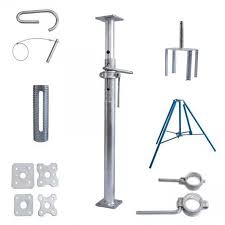Lap . 16, 2024 17:20 Back to list
china timber formwork in construction
The Role of Timber Formwork in Chinese Construction
In the rapidly evolving landscape of construction, formwork plays a critical role in shaping structures. Among various types of formwork, timber formwork remains a prominent choice in the construction industry, particularly in China. Its historical significance, combined with its practical benefits, continues to make it an essential component of modern construction practices.
Timber formwork has been utilized for centuries, serving as one of the earliest materials employed by builders to create molds for pouring concrete. In China, its use dates back to ancient times, epitomizing traditional construction techniques. Timber, being a natural resource, provides builders with a versatile and flexible solution that can easily adapt to various shapes and sizes. This adaptability is vital in a diverse architectural landscape like China, where construction projects range from residential buildings to complex infrastructure developments.
One of the most significant advantages of timber formwork is its cost-effectiveness. Compared to other materials such as steel or aluminum, timber is often more affordable, especially in local markets where timber resources are abundant. Moreover, the ease of assembly and disassembly associated with timber formwork can lead to significant savings in labor costs. Unlike more rigid materials that require specialized labor for installation, timber can often be handled by general workers, accelerating the construction process while reducing expenses related to skilled labor.
Another critical benefit of timber formwork is its environmental footprint. As awareness of sustainability grows, the construction industry is increasingly seeking eco-friendly alternatives. Timber is a renewable resource that can be sourced sustainably, making it a more environmentally friendly choice compared to materials like plastic or steel, which involve more energy-intensive manufacturing processes. Furthermore, timber formwork can often be reused several times before it needs to be replaced, maximizing resource efficiency.
china timber formwork in construction

However, while timber formwork offers numerous advantages, it is not without its challenges. One of the primary concerns is the susceptibility of wood to environmental factors such as moisture and insects. Without proper treatment and maintenance, timber can warp, swell, or suffer from decay, compromising the integrity of the formwork. To mitigate these risks, construction companies in China have increasingly adopted advanced treatments and protective coatings for timber, ensuring that it can withstand the demands of construction sites.
The Chinese government’s push for modernization and urbanization has further advanced the technologies and techniques used in timber formwork. Innovations in engineered wood products, such as laminated veneer lumber (LVL) and glulam (glued laminated timber), have expanded the capabilities of timber formwork. These materials provide enhanced strength and durability, enabling them to support larger and more complex structures, thus aligning with the country’s ambitious infrastructure goals.
Moreover, the integration of technology into the construction process has optimized the use of timber formwork. New software for design and planning allows for precise calculations and simulations, ensuring that formwork structures are not only effective but also safe. This technological influence not only streamlines construction but also enhances overall quality control.
In conclusion, timber formwork remains a significant element of construction in China, blending traditional practices with modern technological advancements. Its cost-effectiveness, environmental advantages, and adaptability make it a favored choice among builders. Overcoming its challenges through innovative solutions and treatments ensures that timber formwork will continue to play a vital role in the future of construction. As urbanization continues to shape China's skyline, the evolution and application of timber formwork are set to remain at the forefront of the industry, supporting sustainable development and architectural creativity.
-
OEM Wall Formwork & Shuttering: Flexible & Curved Solutions
NewsAug.24,2025
-
Adjustable Heavy Duty Props for Slab Formwork | Strong & Reliable Support
NewsAug.23,2025
-
Adjustable Heavy Duty Props for Slab Formwork - Strong & Safe Support
NewsAug.22,2025
-
Formwork Spring Clamp Factories: Quality & Bulk Supply
NewsAug.21,2025
-
Premium Ringlock Scaffolding | China Manufacturer & Supplier
NewsAug.19,2025
-
Efficient Table Formwork for Fast Slab Construction & Reusability
NewsAug.18,2025